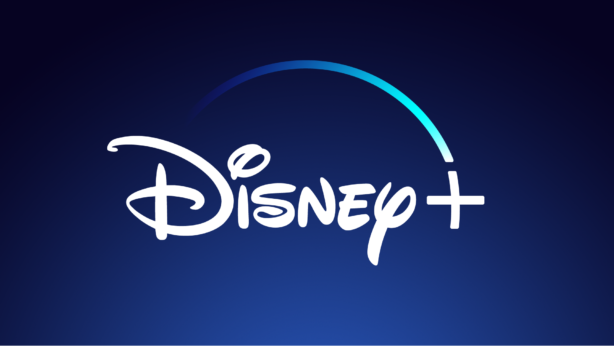
After more than 40 years of operation, DTVE is closing its doors and our website will no longer be updated daily. Thank you for all of your support.
Three is the magic number for Disney
 Disney this week unveiled its plan to bundle its new SVOD offering, Disney+ with Hulu and ESPN+ in the US for US$12.99 a month, a price point that would be highly competitive with Netflix and undercuts the reported US$16-17 a month likely to be charged by WarnerMedia for HBO Max.
Disney this week unveiled its plan to bundle its new SVOD offering, Disney+ with Hulu and ESPN+ in the US for US$12.99 a month, a price point that would be highly competitive with Netflix and undercuts the reported US$16-17 a month likely to be charged by WarnerMedia for HBO Max.
Disney unveiled the plan for the bundle of three services with its fiscal Q3 earnings report, which also provided evidence of how much the company is betting on its D2C play. The Mouse House reported a negative operating loss impact of US$400 million from its investment in direct-to-consumer, and the direct-to-consumer and international business segment is expected to generate an eye-watering operating loss of US$900 million in the fourth quarter, up from US$560 million last year.
Year-on-year, investment in direct-to-consumer, along with Disney’s consolidation of Hulu, will generate a negative change of US$550 million. All of this shows how much the media giant is willing to sacrifice to take on Netflix and beat it at its own game.
A lot is riding on getting the marketing right. Speaking on the Q3 earnings call, CEO Bob Iger said the bundle would be available when Disney+ launches on November 12, though only to US consumers. Disney has hitherto placed an emphasis on the different audience segments to whom its three streaming offerings will appeal and has spent relatively little time highlighting their potential as a joint offering. Disney+ is expected to appeal to a family audience, while Hulu has a more adult appeal and ESPN+ obviously appeals to a different set of interests.
In fact, at the time of Disney’s Q1 update (when it first broke out D2C and international numbers, recording an operating loss of a mere US$136 million), Iger said therewas no intention to bring Hulu, ESPN+ and Disney+ together, and the company had taken the view that “we’d serve the consumer better by segregating all three”. He did say however that there could be room for discounts for people who wanted to sign up for multiple services and Disney’s ultimate goal was to have all its streaming services use the same technology platform.
The new bundling offer doesn’t negate that stance, but it is interesting that Disney is announcing this well ahead of the launch date for the service. Iger now says that the bundle of all three will offer “tremendous quality and tremendous variety for a good price”, with the three parts seen as complementary.
Disney plans to make use of all the marketing muscle it can muster, which, given its ownership of parks, hotels and multiple international networks is considerable. Members of Disney’s D23 fanclub will be given first place in the queue to sign up for Disney+ itself. Iger said the new service would be “the most important product that the company has launched” during his time at its helm, which, as he helpfully reminded listeners, was “quite a long time”.
Iger also said that Disney had also been in talks with potential distribution partners for Disney+, including the likes of Apple, Amazon and Google. “We think it’s important for us to achieve scale relatively quickly, and they’ll be an important part of that,” he said.
Iger did not provide an update on plans to launch Hulu internationally, something he has spoken about in the past, beyond reiterating that “obviously we have designs on growing Hulu outside the US” and noting that Kevin Mayer and his team are “studying opportunities…market by market”.
Delivering a three-in-one package globally would involve a major untangling of rights – which comes at a cost – and, doubtless, the creation of differentiated offerings in each market rather than a neat one-size-fits-all package. Nevertheless, Disney’s major investment in D2C across multiple offerings makes most sense if it can be delivered at global scale.
The company has previously made it clear that it is looking at “rapid expansion” globally for Disney+ in Europe, Latin America and Asia within two years, with a goal of signing up between 60-90 million international subs in a five-year timeframe.
Disney’s grand design for its premium streaming services set it apart from other US media groups now fighting to secure a place in the D2C sun. While the other players have hedged their bets to a greater or lesser extent, balancing the opportunity of securing certain revenues from licensing content to third parties against the prize of connecting directly with consumers, Disney is going for it.
Viacom, CBS and Discovery, all of which also all released quarterly numbers in the last week, have very different approaches to streaming. Viacom is leaning more heavily on the potential of advertising-supported VOD to monetise long tail content, while Discovery is focusing on creating a number of ‘specialty stores’ to deliver subscription revenues to complement its pay and free TV businesses.
While WarnerMedia is a bit closer to Disney in spirit, only the Mouse House really has the scale to take on Netflix and Amazon at their own game. And in some ways that game makes more sense for Disney than it does for Netflix. Disney, with its vast library of well-known titles ripe for exploiting, than it does for Netflix, which finds itself spending more and more cash on originals whose appeal is unproven, but are vital to retain and win subscribers in a world where the availability of attractive licensed properties is thinning out.


